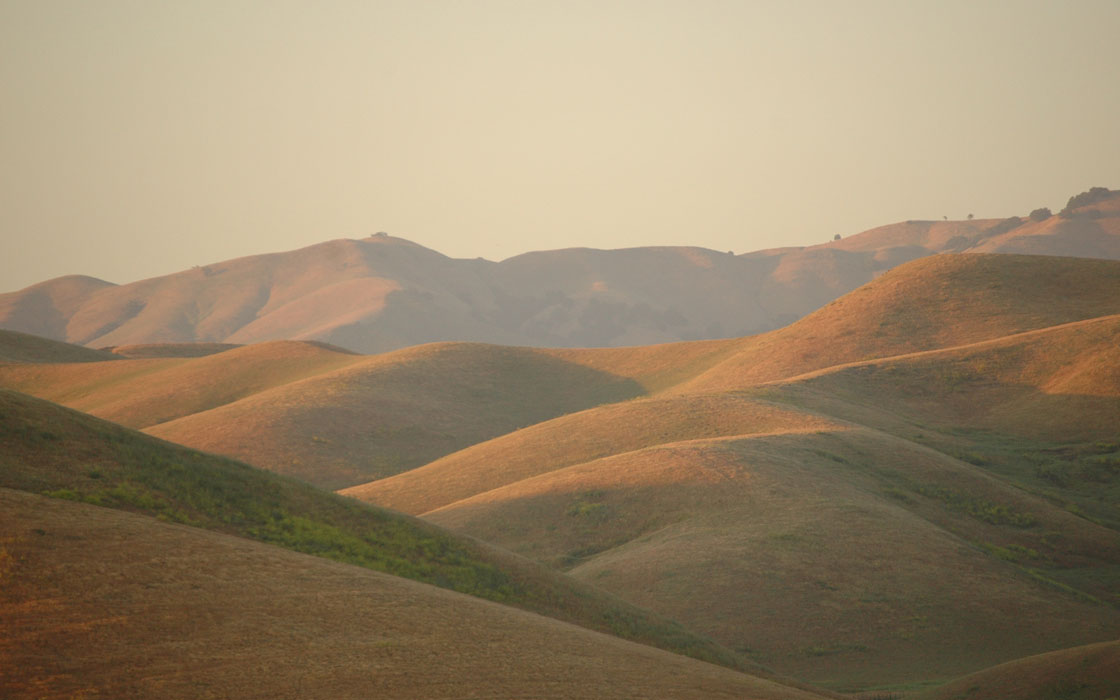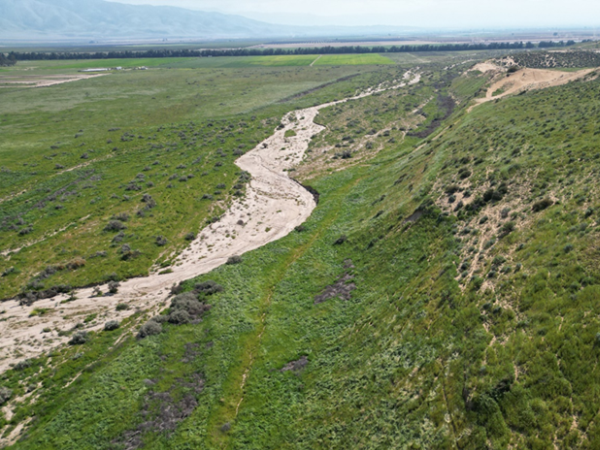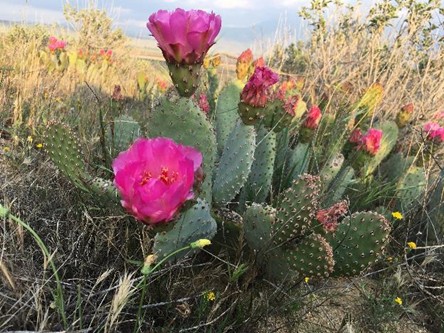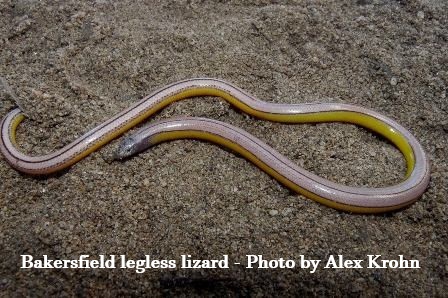CNLM increases habitat protection at Sand Ridge and Caliente Preserves
Kern County, California — October 2025 — The contiguous interior dunes of Sand Ridge and Caliente Preserves —a rare ecosystem that provides habitat for several imperiled species of plants and animals, one of which is found nowhere else on Earth—will receive strengthened protection through grant support from the State of California.
The California Department of Fish and Wildlife, through the Office of Spill Prevention and Response, awarded grant funding to the Center for Natural Lands Management (CNLM), which owns and manages 340 acres of natural land on the Sand Ridge and Caliente Preserves (Preserves). The grant funding from the State will support efforts to control unauthorized use, invasive non-native weeds, and expand the distribution of the State and Federally endangered Bakersfield cactus (Opuntia basilaris ssp. treleasii) on the Preserves.
A critically imperiled landform
The Sand Ridge and Caliente Preserves protect one of California’s rarest ecosystems: stabilized interior dunes — sand formations that have become mostly anchored by vegetation and only shift during extreme wind events. Unlike the state’s coastal dunes, Sand Ridge is found within the San Joaquin Valley, more than 70 miles from the ocean.
The State of California recognizes Sand Ridge as a critically imperiled natural community because of its scarcity and ecological importance. In 1984, the National Park Service designated Sand Ridge as a National Natural Landmark for its exceptional diversity of native plants, including the endangered Bakersfield cactus.
Together, the Preserves encompass much of Sand Ridge as well as a portion of Caliente Creek and its floodplain, about 15 miles southeast of the city of Bakersfield, California.
Imperiled species
Sand Ridge is a highly isolated sand system that harbors several rare plant and animal species, including the federally endangered San Joaquin woolly threads (Monolopia cogdonii) and the world’s largest population of the endangered Bakersfield cactus. It also supports the Bakersfield legless lizard (Anniella grinnelli), a California Species of Special Concern, and the San Joaquin mydas fly (SJMF, Rhaphiomidas trochilus), a species historically referred to as the San Joaquin giant flower-loving fly, which is ranked Critically Imperiled (S1) by NatureServe and found nowhere else on Earth than at Sand Ridge. In addition, the Sand Ridge Jerusalem cricket (Ammoopelmatus sp. nov) was first discovered at Sand Ridge.
Grant funds strengthen protection and restoration
The State grant will enable CNLM to implement stronger protection and habitat restoration measures. This includes:
- A Bakersfield cactus propagation and transplantation program designed to expand Bakersfield cactus into suitable unoccupied areas of the Preserves using genetically diverse propagules, while minimizing impacts on donor plants.
- Improved site protection and security, with new boundary fencing, additional “No Trespassing” signage, remote surveillance, and more frequent patrols to reduce habitat disturbance from unauthorized use.
Livestock grazing will be used to address the widespread distribution and density of ripgut brome within portions of the Preserves, which is designed to be economical, long term, and self-sustaining. The grant will provide the infrastructure needs for livestock, including a suitable boundary fence, corrals, water tank, waterlines, and troughs. Once in place, grazing will be focused on the floodplain areas east of the ridge, where invasive non-native plant cover is especially dense. This ranching operation will generate income for the operator to maintain the infrastructure over time.
The anticipated conservation benefits of the project include (1) reduced degradation of the sand system from ATVs and other unauthorized activities, (2) lower non-native grass biomass, leading to improved habitat structure for special-status species, and (3) expanded distribution of Bakersfield cactus.
Preserve Manger, Greg Warrick, summarized the project’s value: “These grant funds will not only provide immediate conservation benefit but also ensure long-term vegetation management and site protection.”










